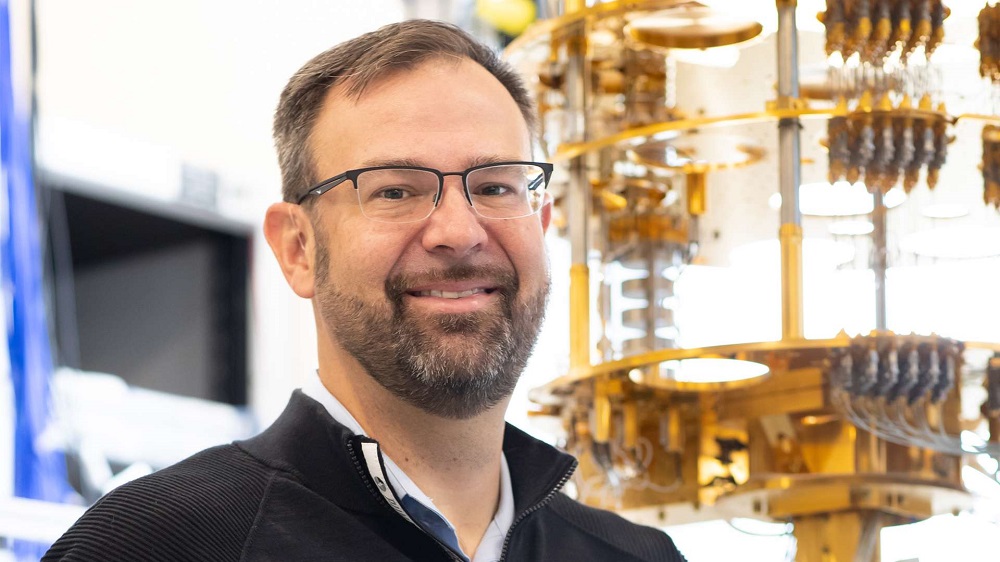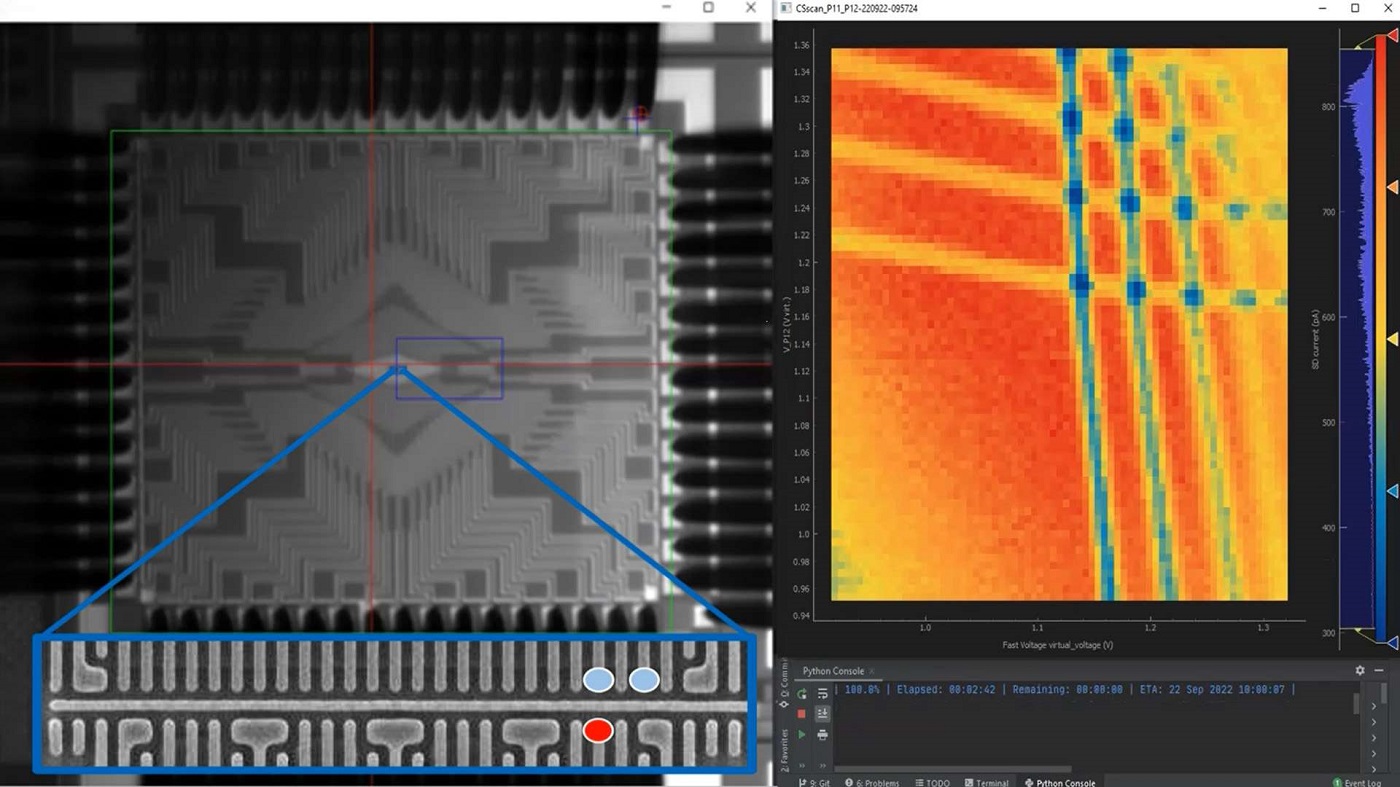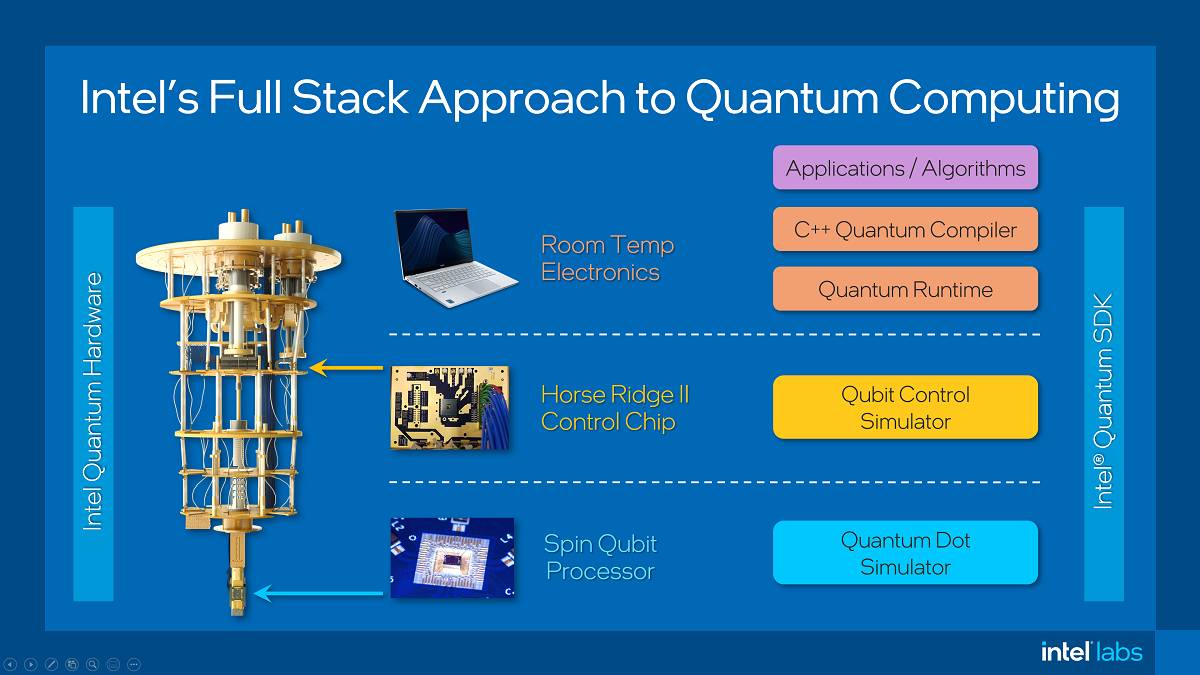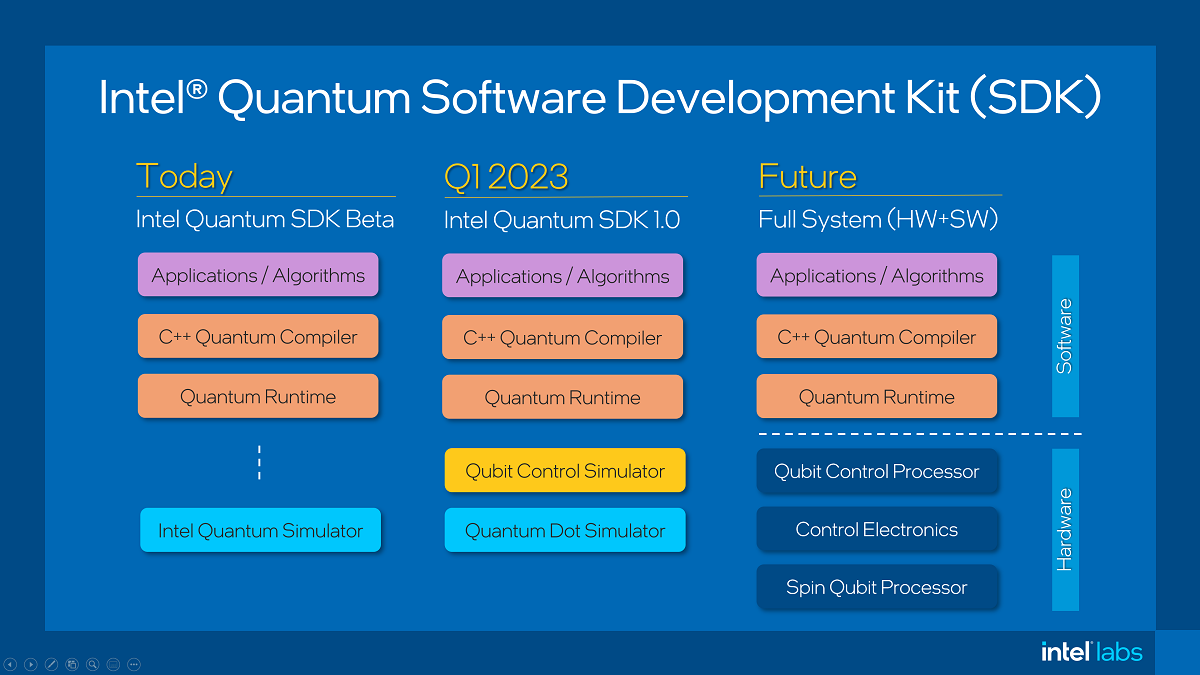Quantum computers are being tested at some of the world’s top high-performance computing centers, which are wading through different systems and approaches to find the best fit for their infrastructure.
A battle for quantum superiority is now emerging around the mass production of quantum chips, which can be challenging given that qubits can be notoriously unstable and difficult to scale to millions of qubits required for universal quantum computers.
But Intel claimed to solve some of those issues in a limited test. The chipmaker was able to produce stable quantum dots in its existing factories, which is a milestone in the company’s long-term goal to build a universal quantum computer. The company used a testing device called a “cryoprober” to isolate and investigate the uniformity of quantum dots on its wafer.
In the process, Intel has claimed an early lead on manufacturing quantum systems. Intel’s pivot to manufacturing with advanced packaging provides a pathway to build more complex computing systems such as quantum devices, analysts said.

“We are making these quantum dots – good quantum dots – hand over foot. We’re making them across the wafer. We have high yield. We’re able to characterize all of them so we get statistics. This is unheard of, at least to our knowledge in the quantum community,” James Clarke, director of quantum hardware at Intel, told HPCwire.
The company hopes by next year to deliver early quantum hardware to Argonne National Laboratory, which is testing quantum hardware from different vendors as part of a U.S. Department of Energy initiative called Q-Next. The U.S. government is prioritizing quantum hardware as part of an ongoing computing supremacy race with China, which is also advancing its quantum computing ambitions.
The Intel milestone was a small step, but it serves as a measure on the yield and viability of mass manufacturing quantum chips. The Intel team isolated 12 quantum dots and four sensors, but the goal is to replicate that on a larger scale.
“This is certainly one of the hard parts, but now we have to grow this device. We have to make it larger, to get the qubits working together. This is still part of a 10-year journey. But we’re well on our way, we know what tools we have in the toolbox,” Clarke said.

Like IBM and Google, Intel is chasing a universal quantum computer, which researchers agree will require more than a million qubits. Google and IBM are chasing superconducting qubits, which can be hard to manufacture on existing processes. Intel’s quantum computing system is based on quantum dots with chips that can be made in its existing factories.
“Our qubits look a lot like transistors. It’s far less of a stretch to see how we would go from a transistor to the Intel spin qubit,” Clarke said.
For quantum to be relevant, it has to be built in large volumes, and Intel has a keen appreciation for that in a way many organizations don’t, said David Kanter, principal analyst at Real World Technologies.
“I don’t think there’s really a consensus in the industry about the right approach to quantum,” Kanter said, adding that “having internal manufacturing is good for new device types.”
To get to logical qubits that are stable and fault tolerant, it is going to take many, many thousands, maybe even millions of raw qubits, said Kevin Krewell, principal analyst at Tirias Research.
“To get this to the end, scaling is important,” Krewell said.
With quantum, ideally the qubits are as identical as possible and 300mm wafers and more advanced lithography tools have the best overlay capabilities, said Dylan Patel, the founder of SemiAnalysis, a semiconductor research and consulting firm.
“It’s hard for other fabs to be able to have access to the most precise tools unless they also have an advanced logic semiconductor business,” Patel said.
Intel has one advantage among companies in the quantum race because they can pattern more accurately with their most advanced tools which are designed for leading-edge angstrom era semiconductors, Patel said.
In the early days of quantum computing, IBM and D-Wave bickered over the superiority of their qubit. IBM accused D-Wave’s quantum annealer system – which is being used by the Jülich Supercomputing Centre in Germany for optimization – of not being a real quantum computer. D-Wave’s computer is now widely viewed as a small-scale quantum computer that is efficient at optimization as opposed to being a full-fledged quantum computer.
Universal quantum computers could make optimizers less relevant as they could be programmed for optimization, cryptography, chemistry, and other applications, Intel’s Clarke said.
“These quantum computers will be accelerators in the datacenter. In fact, you’re probably going to need a reasonable size supercomputer next to the quantum computer to process all the information… it just augments the computing network,” Clarke said.
The qubit superiority debate is still alive between the dozens of quantum computing companies, though business realities are weighing on D-Wave and Rigetti, which were bought by SPAC firms as high-risk, high-reward acquisitions. D-Wave, which counts financial, automotive and defense firms as customers, is already generating meaningful revenue from its annealer, and is also looking to build a universal quantum computer.
Other quantum startups are in their earlier stages. Startup PsiQuantum counts photonics as a key quantum ingredient and wants to build quantum factories the size of datacenters, while IonQ traps atoms and uses lasers to feed and extract data. Microsoft is pinning its quantum computing research on a particle that hasn’t yet been discovered.
Argonne and other high-performance computing installations are recognizing there is room for different types of quantum computers to tackle different problems. These quantum computers will be accelerators attached to high-performance computers with CPUs and GPUs. The top three cloud providers Amazon, Microsoft and Google are offering quantum hardware in their service portfolio.
The road to commercializing quantum computers hinges on the ability to produce those devices in existing factories and using widely available material. Rigetti has touted its in-house ability to make its quantum computer as a viable path to deliver such systems. Intel is turning back to silicon, and has said its factories provide a more realistic path to quantum computing.
“The performance of these devices look good. We’re able to get statistics across the wafer which allows statistical process control so we can make the best decisions on how to improve our process. And because we can scan the whole wafer, we can pick the very best wafer to study at the milli-kelvin temperature in the refrigerator,” Clarke said.
Intel is betting the company’s future on manufacturing and to personalize chips to customers. Intel’s chiplet strategy breaks down a chip into modular blocks, with customers able to build chips with their choice of CPUs, accelerators and interconnects in a package. Intel is implementing new transistor and packaging technologies as it tries to put four new nodes in production by 2025.
“The fastest way to a large-scale computer is the one thing that’s developed microelectronics and compute over the last decade and that’s the transistor, and that’s what we’re doing at Intel. All these others, I don’t discount them as technologies, but they will never arrive faster and at scale,” Clarke said.
The quantum computing chips will also benefit from the chiplet strategy and new packaging technologies, Clarke said.
“At some point, you are going to want a certain level of co-integration between your control and your qubit chip. And this is a tool in the toolbox we have and we’re at the early stages of that,” Clarke said.
The quantum chip was produced at a factory in Portland, Oregon, that uses an amalgam of processes.
“We use processes that are similar to 18A. We use processes that are a bit more relaxed. Certainly the EUV lithography… so we basically are using the same fab and the same tools as the latest greatest process,” Clarke said.
Packaging is nice because it allows assembling a more complicated system, said Real World Technologies’ Kanter.
“Ultimately it is very likely that quantum computers will need to be deployed alongside classical computers, similar to the way CPUs are used in conjunction with GPUs,” Kanter said.
Nvidia made news in recent months with the QODA software kit, which simulates a quantum processor for researchers who don’t have the hardware. Intel last month announced the Quantum SDK, which is a software-based representation of what the full quantum computer will look like. The SDK includes compilers and other tools so developers can write code optimized for the quantum chips. IBM has its own QISKIT quantum development toolkit.
Intel’s ultimate goal is to get the hardware in the hands of the developer, though that could be many years away, Clarke said.
It’s unclear if Intel will make the quantum toolkit and advances available via the Intel Developer Cloud, which was announced last month at the Intel Innovation show. The cloud service provides remote access to yet unreleased chips like Sapphire Rapids server chips and Gaudi 2 AI chips.
“The next thing we’re going to do is release a simulation or simulator of the actual qubit design and how it functions. This is based on a compact model of our actual qubits. And then finally, we have the actual hardware. So, there’s sort of a progression in that,” Clarke said.






























































